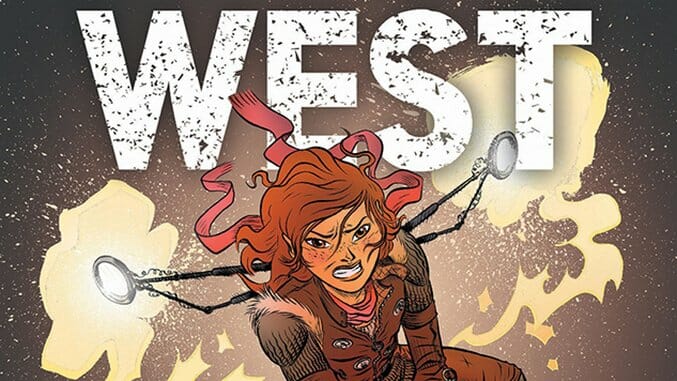Battling Boy: The Fall of the House of West by Paul Pope, J.T. Petty & David Rubín

Writers: Paul Pope & J.T. Petty
Artist: David Rubín
Publisher: First Second
Release Date: October 13, 2015
In 2013, Paul Pope’s long-in-the-works graphic novel Battling Boy entered the world. Given Pope’s fondness for kinetic artwork and the depiction of bodies in nearly-perpetual motion, the subject matter—a young god descending on a city to help fight a succession of monsters—seemed a fine reason to include a series of escalating battles and action setpieces. Also in the mix: A surreal calvacade of villains ranging in design from the demonic to the surreal, including one baddie whose face resembles butterfly wings.
Since then, Pope has worked with co-writer J.T. Petty and artist David Rubín on a pair of prequel volumes that expand the universe of Battling Boy and Acropolis. Though these books borrow liberally from superhero tropes, Pope and his collaborators are hearkening back to that genre’s roots in pulp. It’s an approach similar to the one undertaken by Ed Brubaker and Sean Phillips in their Incognito comics—though their take on the style is a bleaker one than the all-ages Battling Boy books.
-

-

-

-

-

-

-

-

-

-

-

-

-

-

-

-

-

-

-

-

-

-

-

-

-

-

-

-

-

-

-

-

-

-

-

-

-

-

-

-












































